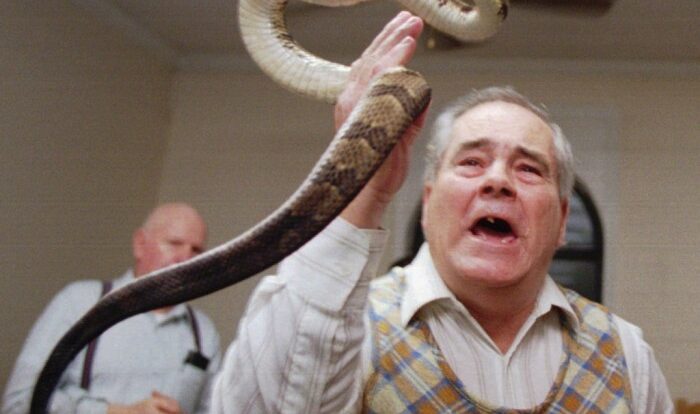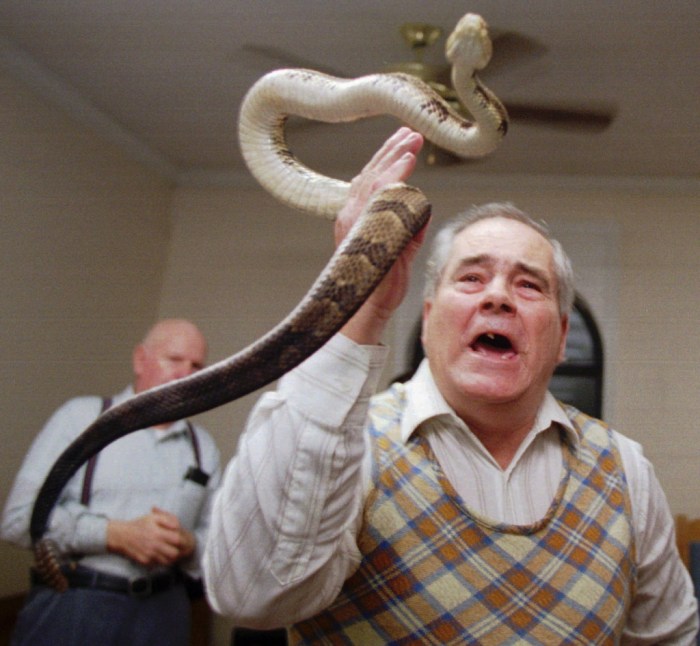
How to handle his snake yumi sin and fit kitty – Embark on an extraordinary journey into the captivating world of snake ownership, as we unravel the secrets of handling your beloved serpent, Yumi Sin. With expert guidance and a touch of playful charm, this comprehensive guide will empower you to navigate the nuances of snake care, ensuring a harmonious coexistence between you and your scaly companion.
Delving into the intricacies of behavioral management, health practices, safety considerations, enrichment strategies, and cohabitation dynamics, this guide unveils the secrets to a thriving and fulfilling snake-human bond.
Behavioral Management Techniques

Effectively managing a snake’s behavior involves establishing clear boundaries, implementing positive reinforcement and punishment strategies, and desensitizing them to common triggers.
Establishing Clear Boundaries and Expectations
- Determine appropriate handling techniques and stick to them consistently.
- Designate specific areas in the enclosure for different activities, such as feeding, basking, and hiding.
- Avoid handling the snake excessively or during times when it may be stressed or defensive.
Positive Reinforcement and Punishment
Handling a snake named Yumi Sin and a cat named Fit Kitty can be tricky, but with the right approach, it’s possible to create a harmonious environment. This guide provides valuable tips on how to safely handle Yumi Sin, keep Fit Kitty comfortable, and foster a positive relationship between the two pets.
By following these guidelines, you can ensure a safe and enjoyable experience for both animals and yourself.
- Reward desirable behaviors with treats, such as small rodents or frozen/thawed prey.
- Use gentle taps or a firm but gentle grip to discourage unwanted behaviors, such as biting or striking.
- Avoid using excessive force or punishment, as this can damage the snake or impair its trust.
Desensitization
- Gradually expose the snake to common triggers, such as handling, loud noises, or unfamiliar objects, while providing positive reinforcement.
- Start with short, controlled exposures and gradually increase the duration and intensity as the snake becomes more comfortable.
- If the snake shows signs of stress or aggression, take a step back and repeat the process more slowly.
Health and Hygiene Practices
Maintaining a healthy and hygienic environment is crucial for the well-being of your snake. Proper feeding techniques, a clean enclosure, and preventive measures against common illnesses ensure a long and healthy life for your pet.
Feeding Techniques
Snakes are carnivorous and their diet consists primarily of live or frozen rodents. The frequency of feeding depends on the snake’s size, age, and activity level. Young snakes may need to eat every 5-7 days, while adult snakes can go longer between meals.
It’s important to avoid overfeeding, as this can lead to obesity and other health problems.
- Offer appropriately sized prey items that are no larger than the widest part of the snake’s body.
- Thaw frozen rodents before feeding to avoid digestive issues.
- Supervise your snake during feeding to prevent escapes or injuries.
- Remove uneaten prey items after 24 hours to prevent spoilage.
Enclosure Hygiene, How to handle his snake yumi sin and fit kitty
Snakes require a clean and sanitary enclosure to thrive. Regular cleaning and disinfection are essential to prevent the spread of bacteria and parasites. The enclosure should be large enough for the snake to move around comfortably and should provide hiding places and temperature gradients.
- Spot clean the enclosure daily to remove feces and shed skin.
- Deep clean the enclosure monthly using a reptile-safe disinfectant.
- Provide a clean water bowl that is large enough for the snake to soak in.
- Maintain proper humidity levels by misting the enclosure or using a humidifier.
Common Illnesses and Prevention
Snakes are susceptible to various illnesses, including respiratory infections, skin infections, and parasites. Early detection and treatment are crucial for the snake’s health. Some common signs of illness include lethargy, loss of appetite, difficulty breathing, and skin lesions.
The art of handling his snake yumi sin and fit kitty can be tricky, but it’s all about finding the right balance. Just like in the world of insurance, where agents must strike a chord with clients to increase productivity.
From understanding their needs to tailoring policies, how to increase insurance agent productivity is a skill that requires finesse. And as you master the delicate dance with your snake yumi sin and fit kitty, remember that the same principles apply in the realm of insurance.
- Regular veterinary checkups can help detect and prevent health problems.
- Quarantine new snakes before introducing them to your collection to prevent the spread of disease.
- Provide a stress-free environment with proper hiding places and temperature gradients.
- Maintain a clean and hygienic enclosure to reduce the risk of infection.
Safety Considerations

Handling snakes can be a rewarding experience, but it is crucial to prioritize safety for both the handler and the snake. This involves being aware of potential hazards, taking appropriate precautions, and responding effectively in case of an incident.
When it comes to taking care of your pets, there are a few things you need to keep in mind. If you have a snake named Yumi Sin and a cat named Fit Kitty, you’ll need to know how to handle them properly.
You can find some helpful tips on how to handle his snake yumi sin and fit kitty online. With a little patience and practice, you’ll be able to keep your pets happy and healthy.
To ensure a safe handling experience, it is essential to wear protective gear such as gloves and long sleeves to prevent bites or scratches. Maintaining a safe distance from the snake is also important, especially when it is feeding or shedding.
Avoid sudden movements or loud noises that may startle the snake and trigger a defensive response.
Preventing Bites
- Always approach the snake calmly and slowly.
- Avoid handling the snake when it is feeding or shedding.
- Support the snake’s body securely and avoid putting pressure on its spine.
- Be aware of the snake’s body language and respect its boundaries.
Responding to Bites
- Remain calm and do not panic.
- Wash the bite area thoroughly with soap and water.
- Immobilize the bitten limb and elevate it above the heart.
- Seek medical attention immediately, even if the bite seems minor.
Enrichment and Stimulation: How To Handle His Snake Yumi Sin And Fit Kitty
Snakes are curious and intelligent creatures that require both mental and physical stimulation to thrive in captivity. Providing an enriched environment that caters to their natural behaviors and instincts is essential for their well-being.
To ensure adequate stimulation, snake enclosures should be designed to provide ample space for movement, exploration, and hiding. This can be achieved by incorporating features such as climbing branches, hiding boxes, and a variety of substrate textures.
Interactive Toys and Activities
In addition to a stimulating enclosure, interactive toys and activities can provide further enrichment. These include:
- Live Prey:Feeding live prey, such as rodents, can provide both physical and mental stimulation. However, it’s crucial to ensure the prey is appropriately sized and supervised to prevent injury.
- Puzzle Feeders:Puzzle feeders require snakes to work for their food, providing cognitive stimulation and encouraging problem-solving skills.
- Scent Trails:Creating scent trails using prey or other scents can encourage snakes to explore their surroundings and engage their senses.
- Handling and Socialization:Regular handling and socialization can provide mental stimulation and help build a bond between the snake and its owner.
Cohabitation and Compatibility
Cohabitation, the practice of housing multiple snakes in the same enclosure, has both potential benefits and risks. While it can provide companionship and stimulation, it also carries the potential for conflict and injury.
Compatible Species
When considering cohabitation, it is crucial to select compatible snake species. Suitable pairings share similar habitat requirements, activity levels, and temperaments. Common compatible species include:
- Corn snakes ( Pantherophis guttatus)
- King snakes ( Lampropeltisspp.)
- Milk snakes ( Lampropeltis triangulum)
li>Rat snakes ( Pantherophisspp.)
Factors to Consider
Beyond species compatibility, several factors must be considered when pairing snakes:
- Size and age:Cohabiting snakes should be similar in size and age to minimize potential dominance issues.
- Temperament:Snakes with known aggressive or defensive behaviors should not be cohabitated.
- Enclosure size:The enclosure must be sufficiently spacious to provide each snake with adequate space and hiding areas.
- Feeding schedule:Cohabiting snakes should be fed separately to prevent competition and aggression.
Monitoring and Troubleshooting
Cohabitating snakes require regular monitoring to ensure their well-being. Signs of potential issues include:
- Aggression or fighting
- Refusal to eat
- Weight loss
- Injuries
If any of these issues arise, the snakes should be separated immediately. Cohabitation may not be suitable for all snakes, and it is essential to prioritize the well-being of the animals involved.
Final Summary

As you embark on this adventure, remember that every interaction with Yumi Sin is an opportunity to deepen your understanding and forge an unbreakable connection. By embracing the principles Artikeld in this guide, you will transform into a confident and capable snake handler, ensuring a lifetime of companionship and mutual enrichment.
FAQs
How often should I feed Yumi Sin?
Feeding frequency varies depending on species, age, and activity level. Consult with a veterinarian for personalized guidance.
What are the signs of a healthy snake?
A healthy snake typically has clear eyes, a clean and smooth skin, and an active appetite. Regular vet checkups are crucial for early detection of any health issues.
How can I prevent bites?
Always approach your snake calmly and avoid sudden movements. Wear protective gear and maintain a safe distance. Never handle your snake when it’s shedding or hungry.


